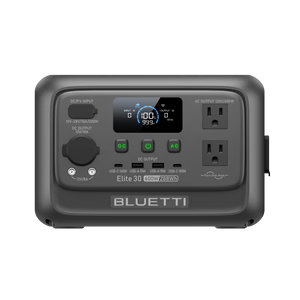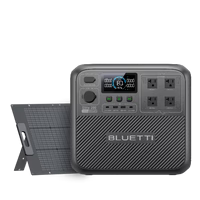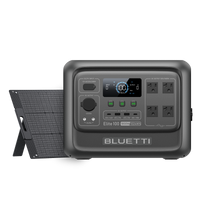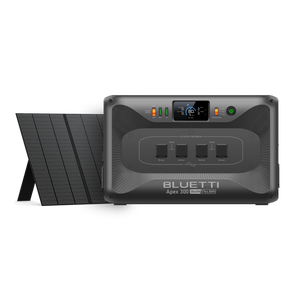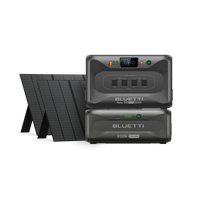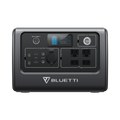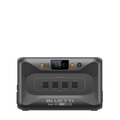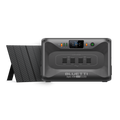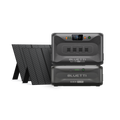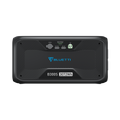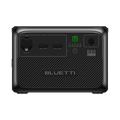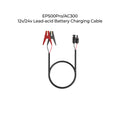Comment retrouver le contrôle et la liberté, surtout face à la hausse constante des prix de l'électricité ? En passant du réseau électrique à une vie autonome. Vivre hors réseau vous libère des factures d'électricité onéreuses et vous permet de vivre mieux, sans stress et à votre rythme. Nombreux sont ceux qui comprennent désormais les avantages de la vie autonome et s'y mettent progressivement. Vous pouvez faire de même.
Cependant, bien que vivre hors réseau soit une excellente décision, la transition n'est pas simple. Elle nécessite une planification et une mise en œuvre rigoureuses. Cela peut être coûteux au départ, mais l'effort et l'investissement en valent la peine à long terme. Alors, qu'est-ce que vivre hors réseau ? Dans ce guide, découvrez comment vous lancer dans cette aventure.
Que signifie vivre hors réseau ?
Vivre hors réseau signifie que vous ne dépendez pas des services publics tels que le réseau d'eau ou le réseau électrique pour accéder aux besoins essentiels comme l'eau, la nourriture ou l'électricité. Votre maison sera donc partiellement ou totalement autonome. Ainsi, pour l'électricité, vivre hors réseau vous permet de disposer d'une source d'énergie alternative, comme l'énergie solaire.
Comme mentionné précédemment, vous pouvez également choisir de vivre partiellement hors réseau. Cela signifie que vous pouvez continuer à produire de l'électricité tout en utilisant le réseau électrique.
Quelle vie hors réseau aimeriez-vous vivre ?
1. Vivre hors réseau en ligne
La vie hors réseau en ligne fait référence à un style de vie dans lequel vous trouvez un équilibre entre vivre hors réseau mais aussi un style de vie autonome.
Avec la vie hors réseau en ligne, vous pouvez tirer parti de certaines ressources en ligne telles qu'Internet et de certaines connexions telles que l'électricité, la communication et l'information, tout en restant déconnecté de certains services publics modernes tels que l'électricité municipale, les systèmes d'eau et les systèmes d'égouts.
Dans la plupart des cas, les personnes qui vivent ce type de style de vie restent connectées à Internet tout en adoptant un système de vie hors réseau.
2. Vie semi-hors réseau
La vie semi-autonome est la forme la plus courante de vie hors réseau. Elle est beaucoup plus simple, pratique et confortable. Contrairement à une vie totalement hors réseau, elle implique l'utilisation partielle des services municipaux.
Par exemple, vous pouvez utiliser un système de compostage des déchets plutôt que d'être raccordé au réseau d'égouts municipal. Vous pouvez également installer des systèmes solaires tout en restant raccordé au réseau électrique, etc.
3. Vivre complètement hors réseau

Vivre complètement hors réseau est un rêve pour la plupart des gens. Cependant, son installation est coûteuse. Avec un système entièrement hors réseau, vous n'avez pas besoin de dépendre de ressources externes ou municipales pour vivre confortablement. Vous pouvez produire vos aliments et votre électricité grâce à l'énergie solaire, installer des systèmes de collecte des eaux pluviales et gérer l'élimination des déchets.
Raisons pour lesquelles vous devriez envisager de vivre hors réseau ?
Vivre hors réseau vous permet non seulement d’économiser beaucoup d’argent à long terme, mais c’est également une activité hautement durable, épanouissante et respectueuse de l’environnement. Voici quelques-uns des avantages de la vie hors réseau.
1. Faible empreinte carbone
Vivre hors réseau présente de nombreux avantages environnementaux. L'énergie solaire est une source d'énergie durable et renouvelable, sans émissions. De plus, vivre hors réseau permet de consommer peu d'énergie pour alimenter son foyer.La plupart des personnes qui préfèrent vivre hors réseau disposent de leur propre système d’approvisionnement en eau, d’une gestion adéquate des déchets et de la possibilité de cultiver des aliments biologiques, ce qui contribue à une faible empreinte carbone.
2. C'est rentable
Le coût de l'électricité est élevé et continuera probablement d'augmenter, ce qui explique pourquoi de nombreuses personnes optent pour une vie autonome. Cependant, le coût initial de mise en place d'un système autonome est élevé. Cependant, cette solution est très rentable à long terme, car elle permet de réduire les dépenses d'électricité, de nourriture et d'eau.
3. Un meilleur style de vie
En général, vivre hors réseau favorise un mode de vie meilleur et plus conscient. Outre la production d'électricité, vous serez enclin à adopter un mode de vie plus sain en préservant l'environnement, en cultivant vos propres aliments et en pratiquant une activité physique, ce qui contribue à une vie plus saine.
Vivre hors réseau vous permet de réguler et de minimiser votre consommation d'énergie et d'avoir le contrôle sur ce que vous mangez, donc un mode de vie conscient et meilleur.
4. Satisfaction personnelle
S'adapter et vivre hors réseau est une compétence qui s'acquiert avec le temps. Survivre sans dépendre des services publics du réseau vous apportera joie, satisfaction et renforcera votre confiance en vous.
Comment commencer à vivre hors réseau pour les débutants ?

Comme mentionné précédemment, vivre hors réseau nécessite une planification et une mise en œuvre adéquates. Les exigences de base pour vivre hors réseau sont les suivantes :
1. Un morceau de terre
Pour réussir votre vie autonome et hors réseau, vous aurez besoin d'un terrain adapté. Être propriétaire d'un terrain vous permet de l'aménager et de l'aménager à votre guise. Assurez-vous qu'il dispose de grands espaces ouverts propices au jardinage, à la production d'électricité et de ressources en eau suffisantes. De plus, un terrain immense n'est pas nécessaire. Une petite parcelle avec quelques espaces ouverts suffit, à condition qu'elle réponde à vos besoins en soleil, en eau et en espaces verts.
2. Système solaire
L'essence même de la vie hors réseau réside dans l'autosuffisance, notamment la capacité à produire de l'électricité. Il existe plusieurs moyens de produire de l'électricité, l'énergie solaire étant la plus répandue. Pour alimenter votre logement hors réseau, vous devrez installer un système solaire. Ce système doit être composé de panneaux solaires, de générateurs solaires, de batteries solaires et de centrales électriques portables. Lors de l'achat d'un système d'énergie solaire, assurez-vous de la fiabilité de la marque.
BLUETTI est une marque de confiance pour tous vos besoins en énergie solaire. Elle propose une large gamme de systèmes solaires pour une vie autonome simple, efficace et abordable. Parmi les produits solaires BLUETTI dont vous avez besoin pour réaliser votre rêve d'autonomie, citons :
Restez alimenté 24h/24 et 7j/7 grâce aux générateurs solaires BLUETTI, que ce soit à la maison ou dans votre camping-car. Les générateurs solaires intègrent des batteries pour stocker l'énergie solaire des panneaux solaires. Efficaces, écologiques et silencieux, les générateurs solaires BLUETTI conviennent parfaitement à une utilisation à la maison ou dans votre camping-car. Voici quelques exemples de générateurs solaires BLUETTI à considérer.
1. Kit générateur solaire BLUETTI AC200P + 3*PV200

Le kit générateur solaire AC200P + 3 générateurs PV200 vous permet de continuer à profiter de l'électricité en cas de panne de courant ou en extérieur. La centrale est équipée de batteries lithium-fer-phosphate durables et sûres. Elle est également équipée d'un onduleur CA sinusoïdal pur de 2 000 watts avec un courant continu et une puissance de pointe de 4 800 watts. Voici quelques-unes des principales caractéristiques de la centrale électrique AC200P.
Caractéristiques
- Haute capacité – Le BLUETTI AC200P est un appareil de grande capacité à 2000 W/2000 Wh. Cette station d'alimentation vous permet d'alimenter vos appareils où que vous soyez, même en camping. Elle peut notamment alimenter une cafetière de 1150 W pendant 1,5 heure, un climatiseur de 5000 BTU pendant 4 heures et un barbecue électrique de 1100 W pendant 1,5 heure.
- Plusieurs ports de sortie- L'AC200P dispose de plusieurs ports de sortie pour charger plusieurs appareils simultanément. Parmi ces ports, on trouve des ports USB-A et USB-B, des prises secteur, un port CC 12 V/3 A, un port camping-car 12 V/25 A, un port allume-cigare et un chargeur sans fil 15 W.
- Sûr et durable- Le climatiseur BLUETTI utilise une batterie lithium-fer-phosphate (LiFePO₄) avec plus de 3 500 cycles de vie et une durée de vie allant jusqu'à 10 ans. Il est également doté d'un système de gestion de batterie (BMS) avancé pour surveiller la centrale et vous protéger contre tout risque potentiel.
- Portabilité facileL'AC200P est compact et relativement léger. Sa poignée ergonomique et ergonomique permet de le soulever et de le transporter confortablement d'une seule main. Sa compacité et sa légèreté le rendent idéal pour le camping et autres activités de plein air.
- Taux de recharge rapideL'AC200P se recharge rapidement en moins de 5 heures grâce à 3 panneaux solaires PV200. Vous pouvez le recharger avec une entrée solaire de 700 W et une entrée CA de 500 W. Vous pouvez obtenir une charge encore plus rapide en combinant simultanément CA et solaire en seulement 2,2 heures.
2. Kit générateur solaire BLUETTI AC300 + 2*B300 + 3*PV200
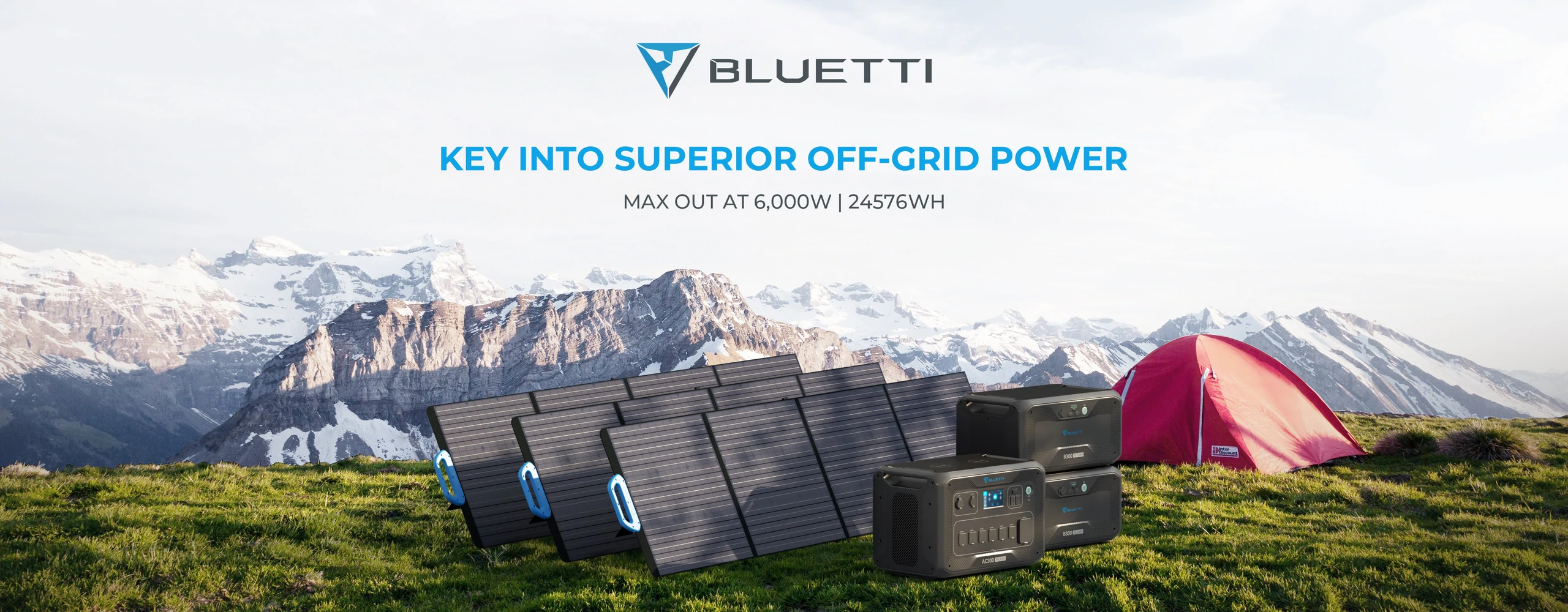
Caractéristiques
- Alimentation extensible haute capacité L'AC300 est 100% modulaire et capable de prendre en charge 4 modules de batterie B300 de 3 072 Wh chacun, pour une capacité exceptionnelle de 12 288 Wh. Une puissance suffisante pour une autonomie prolongée.
- Taux d'entrée élevé- Vous pouvez doubler la charge de l'AC300 grâce à des panneaux solaires et une prise murale, pour une puissance maximale de 5 400 W, ce qui vous fait gagner du temps. L'entrée solaire est de 2 400 W et la prise secteur de 3 000 W, ce qui nécessite deux B300.
- Connexion 240V- Utilisez une Fusion Box Pro (P030A) et connectez deux AC300 pour une sortie 240 V/6 000 W et une capacité totale de 24 576 Wh avec 4 x B300.
- Onduleur à onde sinusoïdale pure 3000 W Avec l'onduleur, vous pouvez régler le taux de charge de 1800W à 3000W à l'aide d'une prise murale en fonction de vos besoins de charge.
- Charge rapide- La technologie MPPT avancée assure une charge sûre et élevée de l'AC300 grâce à l'énergie solaire. Rechargez-le complètement en 7 heures avec 3 panneaux solaires PV200 de 200 W. De plus, rechargez-le complètement en seulement 1,8 heure avec 3000 W AC et 2400 W solaires.
3. Un système d'eau
L'eau est un facteur essentiel pour réussir sa vie hors réseau. La plupart des personnes qui choisissent de vivre hors réseau vivent à proximité de sources d'eau naturelles telles que des rivières, des lacs ou des ruisseaux. Cependant, la plupart choisissent de creuser un puits ou de récupérer l'eau de pluie.
Cependant, vous devez vérifier les sources d'eau légales dans votre région avant de vous lancer dans un projet de préservation de l'eau pour votre projet hors réseau. En général, créer une source d'eau fiable pour une vie confortable hors réseau est coûteux et nécessite une préparation financière.
4. Élimination des déchets
L'élimination des déchets, notamment des déchets humains, est un facteur important à prendre en compte dans une vie autonome. La meilleure façon de s'en débarrasser est d'installer une fosse septique ou d'utiliser des toilettes sèches.
Une fosse septique est un système d'assainissement autonome qui permet aux déchets de retourner dans le sol. Cependant, certains types de sols ne conviennent pas aux fosses septiques. De plus, elles consomment plus d'eau que les toilettes à compost.
Les systèmes de compostage, également appelés pots secs, ne nécessitent pas d'eau. Les solides sont séparés des liquides grâce à un séparateur d'urine. Les déchets solides sont décomposés à l'aide de sciure, de tourbe, de cendre ou de fibre de coco, ce qui contribue à atténuer les odeurs.
Les toilettes à compost sont plus durables, écologiques et faciles à utiliser. Il est conseillé de se renseigner sur les différentes solutions d'élimination des déchets hors réseau afin de choisir la plus durable.
5. Cultiver sa propre nourriture
Cultiver sa nourriture est probablement la dernière étape vers un mode de vie autonome réussi. Une fois toutes les autres ressources en place, vous pouvez vous lancer dans le jardinage et l'élevage. Par exemple, vous pouvez aménager un jardin surélevé pour cultiver des légumes et des aliments. Vous pouvez élever des canards, des poulets ou des poissons pour leurs œufs et leur viande. Il est donc nécessaire d'apprendre à jardiner pour atteindre l'autosuffisance alimentaire.
Articles connexes : Guide du débutant pour vivre hors réseau au Canada
Vivre hors réseau au Canada : ce que vous devez savoir
Commencez votre vie hors réseau maintenant !
Vivre hors réseau est une expérience enrichissante qui simplifie votre vie, la rend plus réfléchie et vous offre une certaine indépendance. Cependant, vivre hors réseau, surtout pour les débutants, peut s'avérer difficile. Cela nécessite une planification minutieuse et un investissement financier et temporel important.
Mais vous pouvez commencer à construire progressivement votre vie autonome. Comme indiqué précédemment, vous pouvez commencer par installer le système d'énergie solaire BLUETTI, puis développer progressivement le reste. Prenez le temps de comprendre tout ce qu'implique la vie autonome avant de vous lancer.
